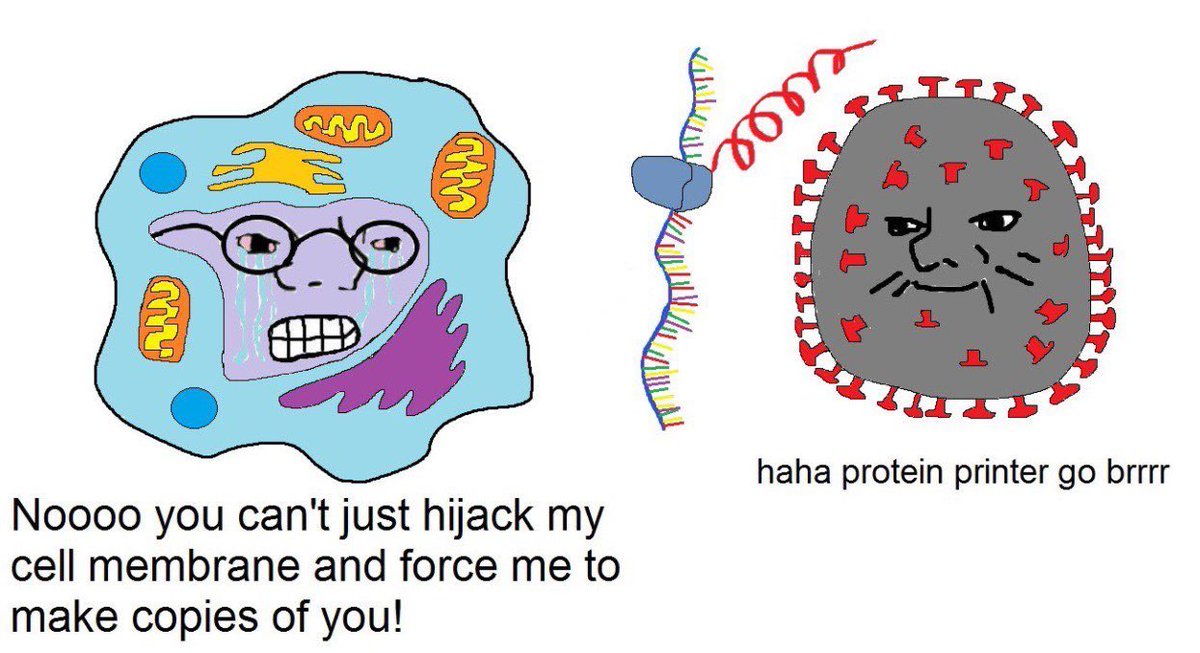
Some reflections on The Gervais Principle, 5 years after first reading.
This is a business book that changed my life and I never believed there could be such a thing 📕
This is a business book that changed my life and I never believed there could be such a thing 📕
“All corporations are pathological” with its implication that corporations are built to be consumed, not built to last.
This was the central message of The Gervais Principle as far as I’m concerned.
It now informs every thought I ever have on work-as-imagined-vs-work-as-done.
This was the central message of The Gervais Principle as far as I’m concerned.
It now informs every thought I ever have on work-as-imagined-vs-work-as-done.
It runs counter to all of my received learning about corporations and thus called into question and caused me to re examine all of my assumptions about my career.
If corporations aren’t designed to last, but instead to be leveraged eventually by the board / execs into some new venture, then what about careers? A career at a single corporation cannot be built to last if corporations are accepted to be consumable.
That’s a side note. The life changing aspect of The Gervais Principle is this: if corporations are intrinsically pathological then all of the Agile Methodologies work from the last 30 years around “health of the product” belongs on the cutting room floor. 🎥
If corporations are pathologies then products don’t grow stronger and healthier and evolve over time into a higher product. Instead products are a manifestation of a larger pathology. And that implies code should be seen as dying and becoming calcified over time.
It’s a weird paradigm but I picked a weird road when I chose Continuous Integration Servers over Web Dev 🤷🏻♂️
It all started in 2011 when John Allspaw posted this article in IRC. Just one of many things he’d read that day. macroresilience.com/2011/12/14/the…
It all started in 2011 when John Allspaw posted this article in IRC. Just one of many things he’d read that day. macroresilience.com/2011/12/14/the…
First of all the idea of change in a corporation as analogous to heroin in a human body, maps perfectly onto Edward Tufte’s caveat to users of software products: “only two industries refer to their customers as users.”
But more important: the idea of change as a pathogen and not (as all Agile literature frames change) a benefit.
It took me a while to admit it to myself but a pathogen mapped much better to observed reality than a benefit or medicine ever had.
It took me a while to admit it to myself but a pathogen mapped much better to observed reality than a benefit or medicine ever had.
Because we all know that efforts to introduce Agile Methodologies often fail. And where they fail, they tend to fail serially. As shown in the classic illustration by Scott Wlaschin 



And this right here is drug addict behavior.
This is behavior that is fully explained by the hypothesis that change of the kind that Agile Methodologies introduce is a pathogen. The kind of pathogen that induces euphoria before enough of it builds up in the system to be toxic.
This is behavior that is fully explained by the hypothesis that change of the kind that Agile Methodologies introduce is a pathogen. The kind of pathogen that induces euphoria before enough of it builds up in the system to be toxic.

The second quadrant on Scott Wlaschin’s graph is the Kubler- Ross Change Curve. Check it out if you haven’t heard of it.
Here’s my version:
Here’s my version:

And that’s a pretty dark meme but if you’ve read this far I’m sure you’ll admit there’s at least some truth to it.
And for me this was something I was struggling with in my core. Because since 2005 I’ve always pursued the same question and that question is
And for me this was something I was struggling with in my core. Because since 2005 I’ve always pursued the same question and that question is
How can so many smart people work so hard on a Web site and still get it wrong in production so often?
This is the core question of my practice as a resilience engineering professional.
Why?!?
This is the core question of my practice as a resilience engineering professional.
Why?!?
Up to the day in 2011 that Allspaw posted that article in IRC I had never considered that perhaps something IN THE LOCAL ENVIRONMENT was making it hard for software teams to get it right.
The closest I had come to this idea was reading the passage “ignoring people and studying software is like ignoring iron walls and studying radio” in the classic Alastair Cockburn paper “Characterizing People As Non-linear First Order Components In Software Development”
But people are rational actors right? And people who do their best not to make mistakes, hardly make any mistakes, right?
I read “think about people”, so I focused on communication and design and left my assumptions unexamined.
I read “think about people”, so I focused on communication and design and left my assumptions unexamined.
Then I encountered Sydney Dekker and company, and learned that even the best, even the highest trained and most expensive professionals, make mistakes! And planes stay up in the sky anyway!
All that work on removing the rough spots in design and communication that I thought
All that work on removing the rough spots in design and communication that I thought
led to mistakes. Years of work on that. Only to find out that preventing mistakes isn’t how planes stay in the air or rockets get to mars. Preventing mistakes isn’t the secret to anything.
So then where are all these errors coming from?!?
So then where are all these errors coming from?!?
And that’s where I still was at, 4 years after being introduced to Dekker, when I first read The Gervais Principle. I only bought it because it was the first thing that seemed related to the post about how process improvements and heroin have a lot in common.
And that’s where I got an answer that worked in that I could take it to my day job architecting software and things suddenly were predictable that seemed wildly out of control before.
“Corporations are pathologies” explains so much about why perfection in software seems so close
“Corporations are pathologies” explains so much about why perfection in software seems so close
and yet also is obviously impossible.
It’s not because of the metastable nature of digital media.
It’s not the staggering depth of time complexity of running processes.
It’s. The. Environment.
It’s not because of the metastable nature of digital media.
It’s not the staggering depth of time complexity of running processes.
It’s. The. Environment.
So for the last few years my approach to “improvement” doesn’t start from anything in any Agile book.
Instead I start from the simple directive: “mitigate the pathological impact of the corporation on the software.”
My teams solve problems now that other teams I was on couldn’t
Instead I start from the simple directive: “mitigate the pathological impact of the corporation on the software.”
My teams solve problems now that other teams I was on couldn’t
And that’s not the most important thing I got out of The Gervais Principle. It certainly isn’t the part that changed my life.
What changed my life was the observation that any corporation contains people who each subscribe to any of at least 3 competing narratives.
And that therefore you must own and commit entirely to your own narrative. Because there very well may not be anyone to do it for you.
And that therefore you must own and commit entirely to your own narrative. Because there very well may not be anyone to do it for you.
A corporation is a pathology within which people subscribe to any of at least 3 mutually exclusive and entirely incompatible narratives.
This implies some communication “problems” are actually *constraints* which can’t be overcome.
That. Explains. So. Much.
This implies some communication “problems” are actually *constraints* which can’t be overcome.
That. Explains. So. Much.
And that means that if I’m committed to process improvement, I might never find any allies. Because I might be the only one in my org that holds that world view.
This has implications for people who aspire to be change agents.
This has implications for people who aspire to be change agents.
First of all the change agent may be totally alone. It is not the case that people can be convinced by “evidence” since they already have strong evidence of their own world view.
Change efforts will not necessarily work, orthogonal to effort.
Change efforts will not necessarily work, orthogonal to effort.
And in the end no one will understand what you tried to contribute or why you thought it would work. That is the real risk to aspiring change agents that The Gervais Principle points out. They may call you unreasonable in the end and never change their minds.
So where the received wisdom is to meet people halfway (whatever that means to you) in reality
a) sometimes you can’t and
b) if you do, you’ll confuse your own narrative and you may be stuck trying to repair that by yourself
a) sometimes you can’t and
b) if you do, you’ll confuse your own narrative and you may be stuck trying to repair that by yourself
The idea that there are multiple fully formed but entirely unresolvable world views intermingled in every corporate office helped me to understand and fix the ways in which I was not taking ownership of the story of my career.
Always own your own narrative. Because to someone else, it may not even make sense. To someone else, it may not look like a narrative at all.
Sorry, I broke the thread. Continues here:
https://twitter.com/noahsussman/status/1440126123476754434
• • •
Missing some Tweet in this thread? You can try to
force a refresh















